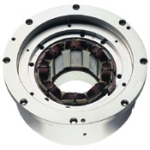
- Industriestrasse 26, 8404 Winterthur, Switzerland
email: mecos@mecos.com, Tel. +41 52 235 14 14
Mecos Traxler AG is the world's largest privately owned and independent company for the development and production of Active Magnetic Bearing systems.
More than 30 highly motivated people develop and produce magnetic bearings for industrial use. We are covering every phase from concept through prototyping to serial production.
- For Turbo Blowers, Turbo Booster, PumpsFlywheels, Compressors and Expanders, Turbomolecular Pumps
- Turbomolecular pumps (TMP) for ultra-high vacuum are known as THE application for AMBs. Whereas contamination-free operation could be achieved by other bearing technologies none of them is suited to operate under vacuum conditions. The very particular shape of a TMP turbine, with or without Holweck stage, makes for highly gyroscopic systems that simply cannot be realized with analog or basic control approaches. MECOS has long standing experience of providing digital controllers for turbomolecular pumps with suction rates of well above 2000 l/s where the size of the turbine wheel exacerbates the challenge of robust and stable operation.
- The design of the MMC2A, digital on-board controller for the HiPace MC is a fine example of cooperation between MECOS and Pfeiffer Vacuum where multiple mechanical and electrical interfaces had to be managed and where integration of the magnetic bearings into the pump required close cooperation.
- The bearing force in a magnetic bearing system is generated by an electromagnet, which serves to hold the rotor in a levitated position. The rotor is monitored constantly by a set of sensors that transmit signals to a digital controller at a rate of up to 10'000 cycles per second. The controller measures any possible deviation of the rotor from its nominal position and supplies the electric current required to maintain rotor stability by means of a power amplifier.